Virgin Media O2 Deploy 4G at 50 UK Rural Mobile Masts Under SRN

Mobile operator O2 (VMO2) has today confirmed that they’ve so far deployed “reliable” 4G based mobile broadband coverage across a total of 50 rural sites in the United Kingdom, which forms part of their commitment under the £1bn industry-led Shared Rural Network (SRN) project with the Government.
In case you forgot, the SRN – supported by a public investment of £500m and £532m from all four primary operators (EE, O2, Vodafone and Three UK) – aims to help extend geographic 4G coverage to 95% of the UK by the end of 2025 (it will also aid the 5G rollout). The scheme involves both the reciprocal sharing of existing masts in certain areas and the demand-led building and sharing of new masts in others.
However, the 95% coverage target is only when the 4G service is available from at least one operator, while the UK coverage forecast for SRN completion for all operators (i.e. geographic areas where you’ll be able to take 4G from all four operators) is actually just 84% for the same date.
Advertisement
As part of that, O2 has today confirmed that they’ve delivered 4G connectivity across 50 sites under the SRN – an area covering almost 2,200km2. The village of Helmsdale in Scotland’s Highlands region became the 50th site to benefit from 4G connectivity after they upgraded an existing mast in the area. In fact, some 39 of those 50 sites have all been in Scotland. The other 11 are in eastern parts of England, including rural parts of Yorkshire, Suffolk and Kent.
The operator has also secured planning consent for works at a further 100 sites, meaning work can start in the near future.
Jeanie York, CTO of Virgin Media O2, said:
“We are investing heavily in our network to ensure we’re offering fast and reliable mobile coverage to customers in all parts of the UK. We know many rural communities are unable to access the same level of connectivity as urban areas so we’re committed to delivering improvements through the Shared Rural Network programme.
Boosting connectivity at 50 sites is a real milestone and means more residents, businesses and tourists in rural areas can benefit from better mobile coverage. In the weeks and months ahead we’ll continue pushing forward with our rural investments, building new masts and upgrading existing ones across various remote UK locations as we work to tackle the urban-rural digital divide.”
The news follows shortly after Vodafone revealed that its work under the SRN had similarly deployed 4G to 57 rural locations in England, Scotland, Wales, and Northern Ireland under the programme (here). Similarly, EE claims to have delivered 4G to over 1,500 remote sites under the same programme (here), which they said reflected more than 2,000 square miles (5,180km2) of additional 4G connectivity for rural areas.
List of VMO2’s First 50 Rural SRN Sites
Aberfeldy, Perth and Kinross
Alford, Aberdeenshire
Ballater, Aberdeenshire
Banff, Aberdeenshire
Beauly, Highland
Bellingham, Northumberland
Buckie, Moray
Callander, Stirling
Campbeltown, Argyll and Bute
Campbeltown, Argyll and Bute
Chelmsford
Colchester
Colonsay, Argyll and Bute
Darwell Wood, East Sussex
Dunoon, Argyll and Bute
Dunoon, Argyll and Bute
Haddington, East Lothian
Hailsham, Wealden
Helmsdale, Highland
Inverness, Highland
Ipswich
Ipswich
Isle of Arran
Isle of Bute, Argyll and Bute
Isle of Harris, Hebrides
Isle of Harris, Hebrides
Isle of Lewis, Hebrides
Isle of Lewis, Hebrides
Isle of Lewis, Hebrides
Isle of Mull, Argyll and Bute
Isle of Mull, Argyll and Bute
Isle of Mull, Argyll and Bute
Isle of North Uist, Hebrides
Isle of Sky, Hebrides
Knockendoch, Dumfries
Kyle, Highland
Lairg, Highland
Lairg, Highland
Maidstone (Kent)
Newport on Tay, Fife
Oakham, Rutland
Orkney
Perth, Perth and Kinross
Selkirk, Scottish Borders
Sheerness, Swale (Kent)
Shetland
Tadcaster, Leeds
Tain, Highland
Tighnabruaich, Argyll and Bute
Walkerburn, Scottish Borders
Mark is a professional technology writer, IT consultant and computer engineer from Dorset (England), he also founded ISPreview in 1999 and enjoys analysing the latest telecoms and broadband developments. Find me on X (Twitter), Mastodon, Facebook, BlueSky, Threads.net and Linkedin.
« Shropshire UK Hails Completion of Superfast Broadband Rollout









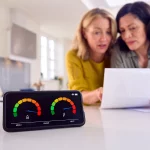
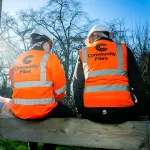


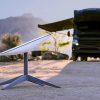
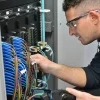
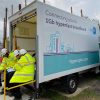


































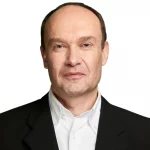
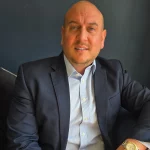



This is always welcome news. Curious to know what the overlap is like of coverage between the big 4
*in planned work, not current levels
I wonder where the Maidstone site is.
SRN progress is pathetically slow, not a single site in Devon which is one of the worst areas in England for partial not-spots (according to the published SRN maps). Total not-spots are actually quite rare, so very few completely new cell sites are needed, just a lot more S in SRN..
4G. Don’t make me laugh. Why not future proof and put up 5G.